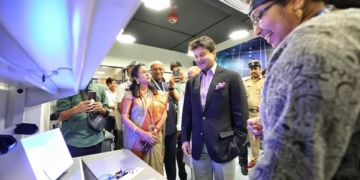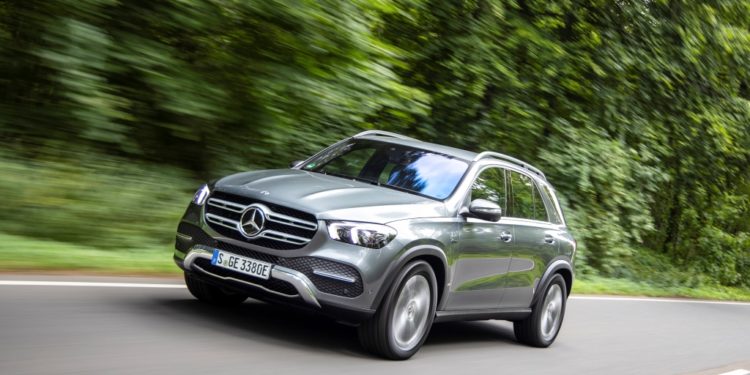Major milestone on the way to emission-free driving
Plug-in hybrids bring customers the best of two worlds: in town they run in all-electric mode, while on long journeys they benefit from the range of the combustion engine. They make the vehicle more efficient overall, because they can firstly recover energy during braking and secondly allow the combustion engine to run in favourable operating ranges.
Plug-in initiative by Mercedes-Benz
By the end of 2019 Mercedes-Benz will have more than ten plug-in hybrids in its range – an attractive portfolio from compact models to the flagship Mercedes-Benz S-Class. The aim is to be able to offer customers well over 20 model variants in 2020.
EQ Power in the compact car segment
With the A 250 e (weighted fuel consumption 1.5-1.4 l/100 km, weighted CO2 emissions 34-33 g/km, weighted power consumption 15.0-14.8 kWh/100 km)[1], the A 250 e Saloon (weighted fuel consumption 1.4 l/100 km, weighted CO2 emissions 33-32 g/km, weighted power consumption 14.8 -14.7 kWh/100 km)1 and the B 250 e (weighted fuel consumption 1.6-1.4 l/100 km, weighted CO2 emissions 36-32 g/km, weighted power consumption 15.4-14.7 kWh/100 km)1, models in the compact car family with third-generation hybrid drive are now celebrating their premiere. They use a hybrid power unit with the 8G-DCT dual-clutch transmission.
Third-generation plug-in hybrids
In models with a longitudinally installed engine, the electric motor has been redesigned for the 9G-TRONIC plug-in hybrid transmission, and is conceived as an indoor-running, permanently agitated, synchronous motor. The likewise new, significantly enhanced power electronics have allowed significant increases in power and torque density. One of the greatest innovations is the torque converter with an integrated torque converter lockup clutch. The new GLE 350 de 4MATIC (weighted fuel consumption 1.1 l/100 km, weighted CO2 emissions 29 g/km, weighted power consumption 25.4 kWh/100 km)1 achieves a range of over 100 kilometres (NEDC) with an appropriate driving style, thanks to a battery with a capacity of 31.2 kWh.
Intelligent operating strategy
The intelligent, route-based operating strategy activates the electric driving mode where this is most appropriate for the route. For example, it takes into account navigation data, topography, speed limits and the traffic conditions for the entire planned route. The ECO Assistant coaches the driver and helps to save fuel.
Easier charging
The compact hybrids can be charged using alternating or direct current. The new GLE 350 de 4MATIC has a combined charging socket for AC and DC charging. With Mercedes me Charge, drivers of a plug-in hybrid model with the latest MBUX (Mercedes-Benz User Experience) infotainment generation have optional access to one of the world’s largest charging networks. Thanks to navigation, Mercedes-Benz customers can find these stations easily and can gain convenient access to the charging stations via the Mercedes me Charge card, the Mercedes me App or directly from the car.
[1] The stated figures are the measured “NEDC CO2 figures” in accordance with Art. 2 No. 1 Implementing Regulation (EU) 2017/1153. The fuel consumption figures were calculated based on these figures. The range and the electrical consumption have been determined on the basis of Regulation (EC) No. 692/2008. A different value is applied in accordance with EmoG. A higher figure may apply as the basis for calculating the motor vehicle tax.
* Further information on the official fuel consumption and the official specific CO₂ emissions of new passenger cars can be found in the “Guide to Fuel Consumption, CO₂ Emissions and Electricity Consumption” for new passenger cars, which is available free of charge at all sales outlets and from Deutsche Automobil Treuhand GmbH at www.dat.de.
EQ Power: The family of Mercedes-Benz plug-in hybrids is growing: Electric driving in all vehicle segments
Stuttgart/Frankfurt. Plug-in hybrids offer customers the best of both worlds: in town they run in all-electric mode, while on long journeys they benefit from the range of the combustion engine. They make the vehicle more efficient overall, because they can firstly recover energy during braking and secondly allow the combustion engine to run in favourable operating ranges. The intelligent, route-based operating strategy activates the electric driving mode where this is most appropriate for the route. It takes into account e.g. navigation data, topography, speed limits and the traffic conditions for the entire planned route. Plug-in hybrids are also an important milestone on the way to emission-free driving. Mercedes Benz Cars is systematically developing its plug-in hybrids further under the EQ Power label. EQ Power is also a guarantee of exceptional dynamism. EQ Power+ is the name of the performance hybrid technology that Mercedes‑AMG will use on the road in future, and is already used successfully in Formula 1 today. The latest members of the EQ Power family, the A and B-Class, reinforce the plug-in initiative by Mercedes-Benz: the company aims to extend its offering to more than 20 model variants by 2020.
With the help of the EQ Ready App,[1] Mercedes-Benz has established how long the journeys of people interested in e-mobility are on average. Car drivers can use this app to analyse their user behaviour and receive a recommendation of the electric model most suitable for them. The results show that
- 90 percent of all journeys are shorter than 50 kilometres,
- 96 percent of all journeys are shorter than 100 kilometres and
- 99 percent of all journeys are shorter than 400 kilometres,
The range of average distances per journey by interested persons varies in the individual markets, extending from just over eight kilometres in Hong Kong to slightly more than 27 kilometres in the Netherlands, where there is particularly high interest in e-mobility. This means that many journeys can be undertaken exclusively under electric power with the current plug-in models of Mercedes-Benz.














































